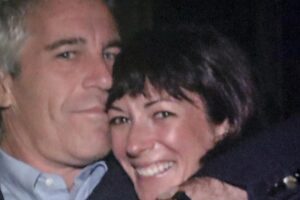
Matthew Hayden and Justin Langer (1999-2007) stand out in the modern era. They opened together in 113 innings, accumulating 5655 runs at an imposing average of 51.88. Crucially, they registered 14 century and 24 half-century partnerships.
David Warner and Chris Rogers (2013-2015) followed, offering a blend of dynamism and discipline. Despite opening together in just 41 innings, they amassed 2053 runs at an average of 51.32. Rogers’ stoic technique was the ideal balance to Warner’s explosiveness.
Preceding these modern pairs were Mark Taylor and Michael Slater (1993-1999). In 78 innings, they scored 3887 runs at 51.14. Their synergy and balance laid the foundation for Australia’s sustained dominance during the 1990s.
Greg Chappell’s Australian XI for the first Ashes Test
Usman KhawajaMitch MarshMarnus LabuschagneSteve SmithTravis HeadCameron GreenAlex CareyMitchell StarcNathan LyonJosh HazlewoodScott Boland
12th man: Beau Webster
The success of these pairs is borne out by statistics. The winning percentage of teams recording a 50-run opening stand is about 39 per cent, which rises to 44 per cent if they score 100 or more. Opening stands of under 50 runs result in a reduced win rate of about 31 per cent.
A 2013 statistical study published in the Sri Lankan Journal of Applied Statistics, titled “An Investigation of Synergy Between Batsmen in Opening Partnerships”, explored this aspect. It affirmed that in Ashes Tests, opening partnerships significantly affected match outcomes, especially when the batters displayed effective synergy – complementing each other’s strengths and mitigating weaknesses.
It was found that “opening partnerships with synergy – even with moderate averages – had a statistically significant positive influence on the probability of team victory in Ashes Tests”. The study concluded that the ability of pairs to function as a unit was a stronger predictor of winning outcomes than standalone brilliance or individual averages. In matches where the Australian pairs posted partnerships of 50-plus runs, Hayden and Langer’s sides achieved victories 65.7 per cent of the time, those of Warner and Rogers 56.3 per cent, and Taylor and Slater’s, 65.3 per cent.
Loading
England’s current opening pair, Zak Crawley and Ben Duckett, embody a stark tactical contrast from the Australians. Their approach is aligned with the “Bazball” philosophy, which prioritises tempo and aggression. Between 2022 and 2025, they have opened in 73 innings, scoring 2281 runs at a moderate average of 32.12. Their strike rate of 72.38 is nearly double that of traditional openers such as Taylor and Langer. They have three century and 14 half-century stands. While England’s modern approach is exhilarating to watch, their win rate in matches with stands of 50-plus runs is just 47.3 per cent – significantly lower than all three noted Australian pairs.
Now, we are scrambling to find a replacement for Warner, so our opening pair is still far from settled. Sam Konstas’ treatment since his Test debut last year has been quixotic. I believe that it takes an individual up to 10 Tests, at least, to work out how to succeed at that level. The decision to not pick Konstas in Sri Lanka was bewildering, so he is not in the frame.
Matt Renshaw has begun the domestic season in imperious form and the selectors might be swayed towards the safe hands of the two Queenslanders – Usman Khawaja being the other. The two are domestic opening partners, and their established synergy has the hallmark of the best Ashes opening pairs. The odds are in Renshaw’s favour as he combines well with his state teammate and offers a more assured option, having made 14 Test appearances which include a century and three 50s.
Jake Weatherald from Tasmania is a gifted player and a viable alternative. His early career in South Australia was blighted by inconsistency so, without exceptional pre-selection form, introducing him risks exposure to overwhelming pressure.
Loading
I believe Marnus Labuschagne should bat at three as that is his specialist spot from where he has delivered prolifically. The fact he is being considered as an opener does not make sense.
Ian Chappell and Ricky Ponting were exceptional No.3s for Australia. That doesn’t mean that they would have been as successful had they been press-ganged into opening. They were often batting early in the innings but the mindset required to walk out and open an innings is subtly different.
If I was picking the team for Perth, I would choose Khawaja, Marsh, Labuschagne, Smith, Head, Green, Carey, Starc, Lyon, Hazlewood and Boland with Webster as 12th man. Marsh would offer the bowling depth if Green is not ready to bowl and we would have everyone batting where they are best suited.
Both teams seem to be following Sun Tzu’s dictum and know themselves and their opposition well. A disaster will thus be averted and I expect a close fought series with Australia favourites in view of their formidable Ashes record at home.
News, results and expert analysis from the weekend of sport are sent every Monday. Sign up for our Sport newsletter.





